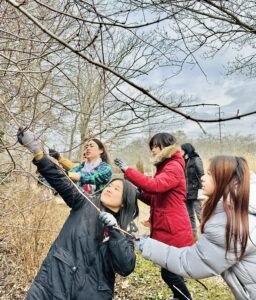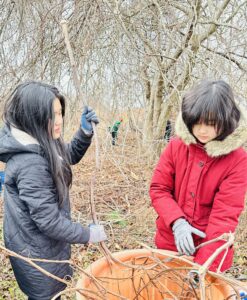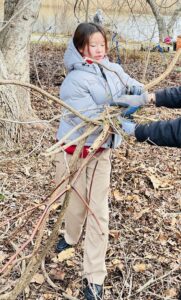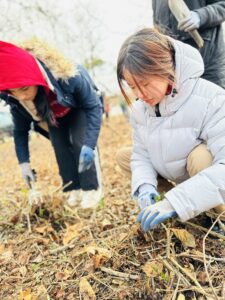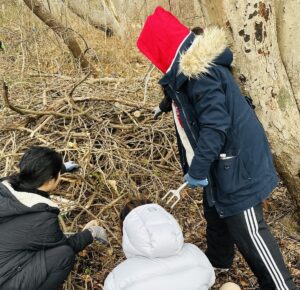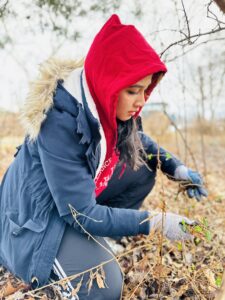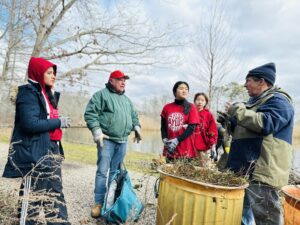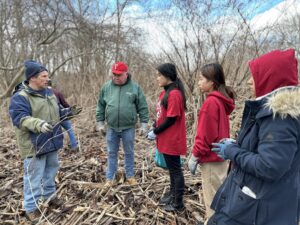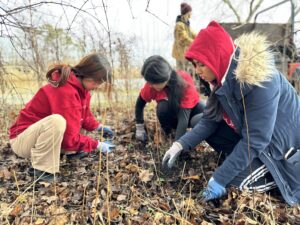Written By: Ru Xue Jiang
On Saturday, 1/21/23, the AYLUS Dix Hills Branch worked together with Saturday Stewardship for the second time to remove invasive species including the honeysuckle, the Chinese bittersweet, and the Japanese Knotweed.
The origin of introducing non-native plants typically stems from their beauty. Their activity in America was ostensibly limited to decoration, but the lack of effort to contain them led to the rapid spread of these species without natural predators or inhibitors.
Because honeysuckle is a heat-tolerant plant, it may grow in a variety of climates, including non-indigenous regions. They develop into sprawling vines or arched bushes, and span large portions of the ground. Eventually, their growth patterns lead them to overcrowd and block light for numerous natural trees, shrubs, ground-covers, and spring wildflowers. Additionally, they compete with pollinators, reducing native species’ fruit production and seed production despite the latter’s inability to offer crucial nutrients. The contributions of all of the volunteers working to remove these plants filled 4 large containers of plants.
The Chinese Bittersweet’s tangled tendrils grow on native trees, occasionally becoming thick enough to uproot entire trees and plants. Further destruction can be seen during storms as it causes cracks and damages externally and internally to the attached tree, which creates an opening for fungus and insects to infiltrate. Furthermore, the Chinese Bittersweet obscure their surrounding plants from reaching sunlight and smother the tree they climbed, thus limiting sunlight and oxygen for native species. At the start of the event, we encountered thick on one of the largest trees. However, at the end of our events, most of the Chinese Bittersweet was removed from a tree.
The herbaceous perennial Japanese Knotweed grows in enormous colonies of upright, arching stems (resembling bamboo). Round, smooth, hollow stems with reddish-brown blotches can be seen. The stature of these plants take over large areas surrounding it, diminishing the ability of native species to reach sunlight and live. It spreads through the plant’s chopped stems or fragments of rhizomes (roots). Volunteers worked with the rule of 3, so after three seasons of volunteers cutting the plant down for 3 consecutive years, the Japanese Knotweed should weaken and die.
Although some native animals have adapted to the invasive species and are using it to build their homes, such as some birds, the invasive species are still harming the ecosystem. To combat this, the invasive species will be replaced with native species that are more congruous with nutrient rich diets, materials, and growth.
The contribution of AYLUS Dix Hills members in the removal of these species have allowed the ecosystem to breathe as well as thrive to a greater extent.
Volunteers: Ru Xue Jiang (3 hours), Sara Kong (2 hours and 30 minutes), Rohma Masood (2 hours), and Ming Chen (2 hours).


